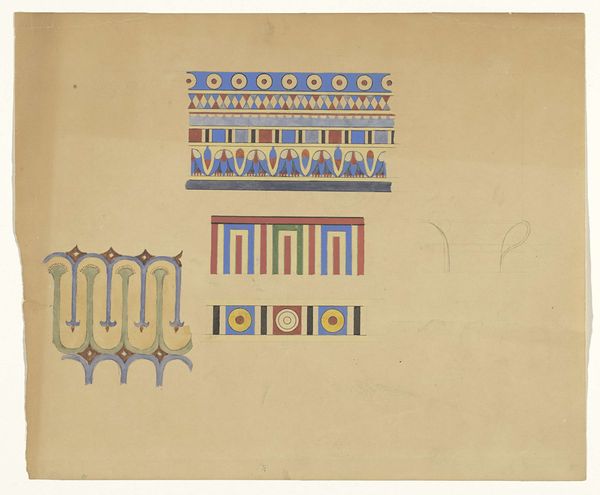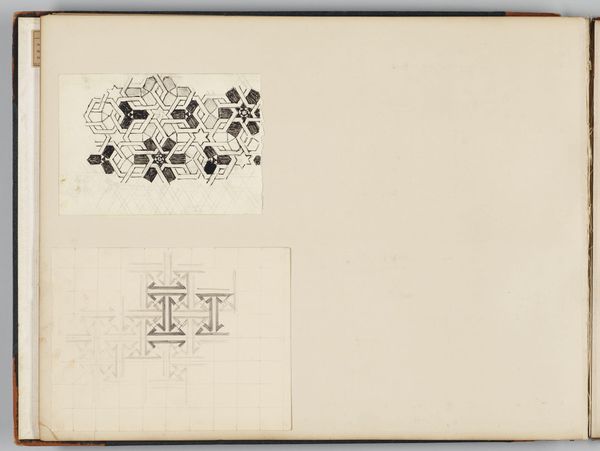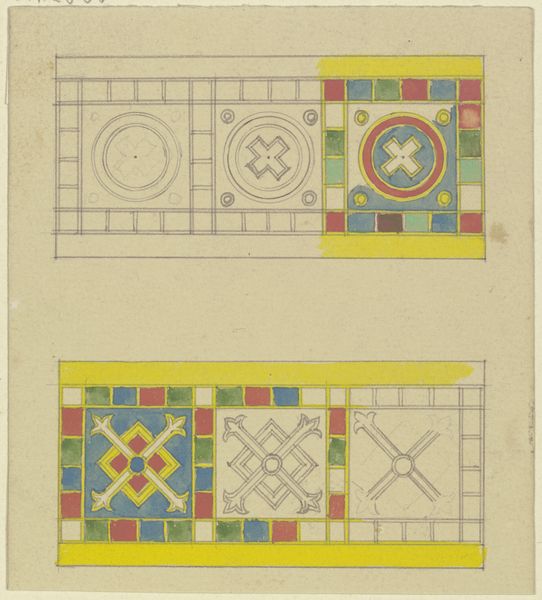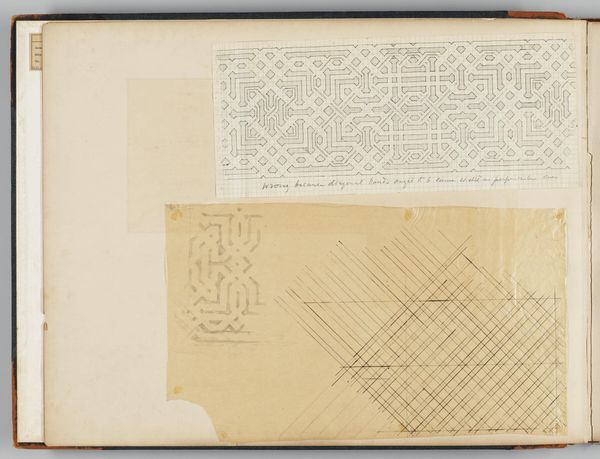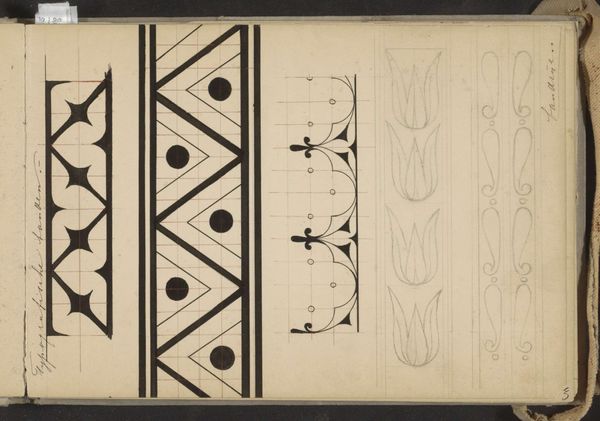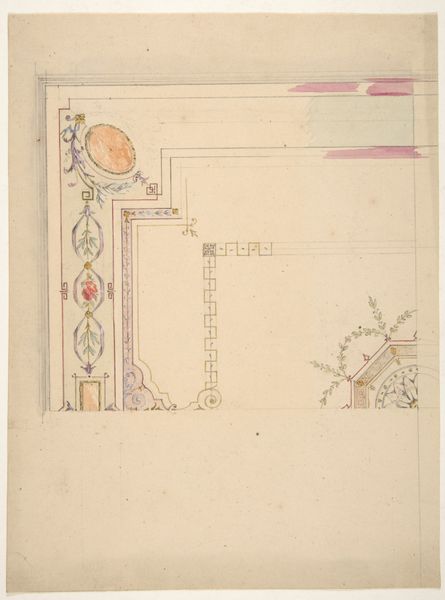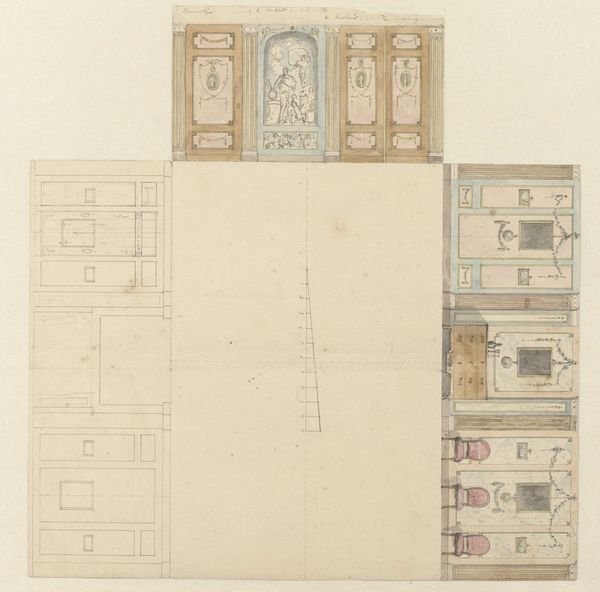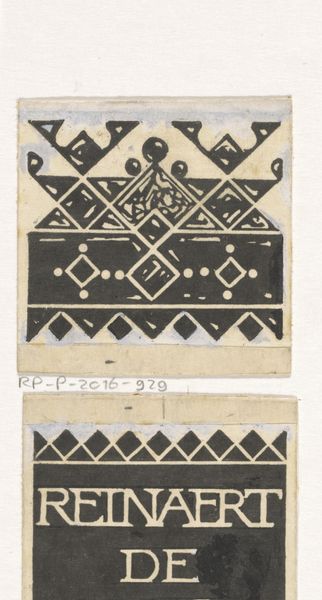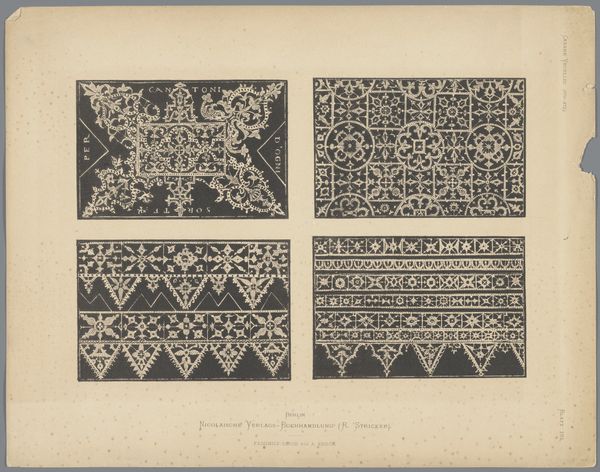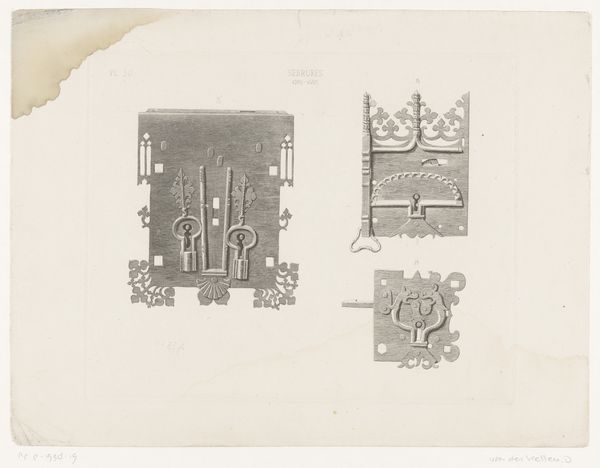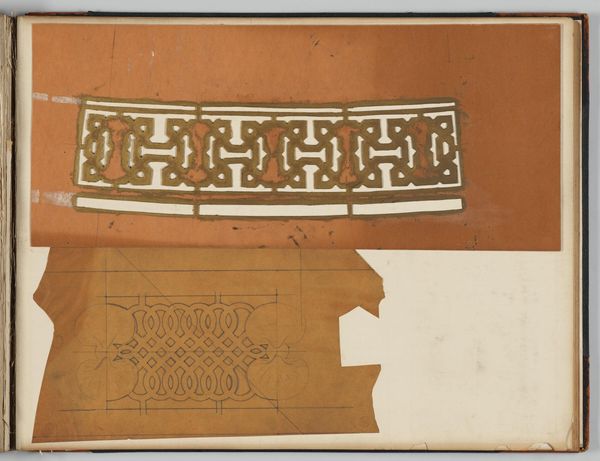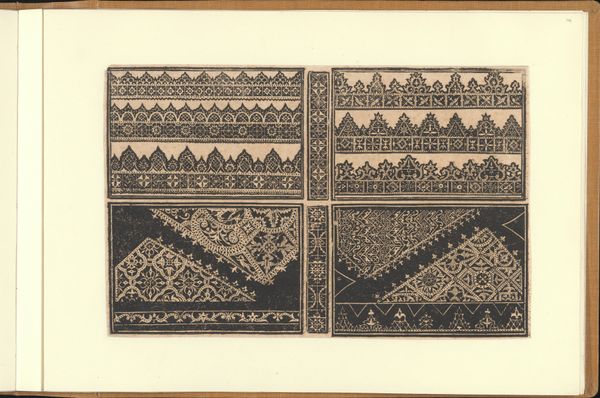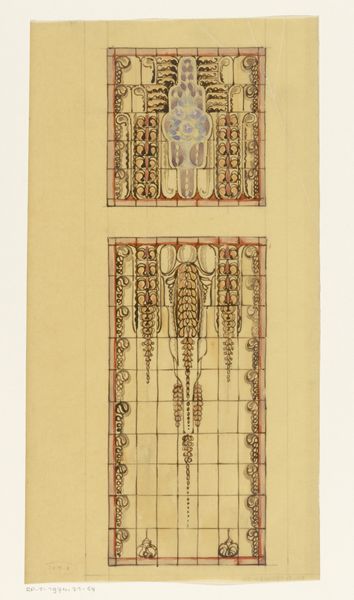
drawing, paper, watercolor
#
drawing
#
water colours
#
paper
#
watercolor
#
geometric
#
orientalism
#
watercolour illustration
Dimensions: height 208 mm, width 254 mm
Copyright: Rijks Museum: Open Domain
Editor: This watercolor drawing, "Tapijt (?), vloeren en Egyptische motieven," created by Franz Jakob Kreuter around 1835-1860, features various geometric and floral motifs. I'm really struck by how these designs seem to blend different cultural influences, yet I can't quite articulate how this combination might speak to the artist’s specific moment in history. What's your interpretation? Curator: I think that blending you perceive is a key element here. This drawing speaks to a fascinating period of cultural exchange and appropriation known as Orientalism. Artists like Kreuter, working within a context of European colonial expansion, often depicted and reinterpreted Middle Eastern and North African cultures through a Western lens. Editor: So, what appears decorative is actually loaded with colonial undertones? Curator: Precisely. The “Egyptian motieven,” for instance, reflect a European fascination with Egypt fuelled by archaeological discoveries and imperial ambitions. Ask yourself, who had access to represent these motifs, and why? How might these stylized depictions reinforce or challenge existing power structures? Editor: That's a compelling point. I guess I hadn't considered how even seemingly harmless design choices could be intertwined with broader power dynamics. The geometric patterns, initially just aesthetic to me, now feel like they might also be a form of cultural translation. Curator: Indeed. These images provided a readily digestible version of the “Orient” for European audiences. Looking at the architectural depictions, what socioeconomic structures do they infer? The reception room becomes an orientalist construction—a display of wealth, power, and presumed 'cultural refinement’ of an imperial culture. Editor: Thinking about it that way makes me rethink the drawing entirely. It’s not just a collection of patterns, but a statement on how cultures are perceived and consumed. Curator: Exactly! It is worth keeping in mind our place and privilege, and it's a vital part of analyzing this kind of work, which makes one think.
Comments
No comments
Be the first to comment and join the conversation on the ultimate creative platform.
